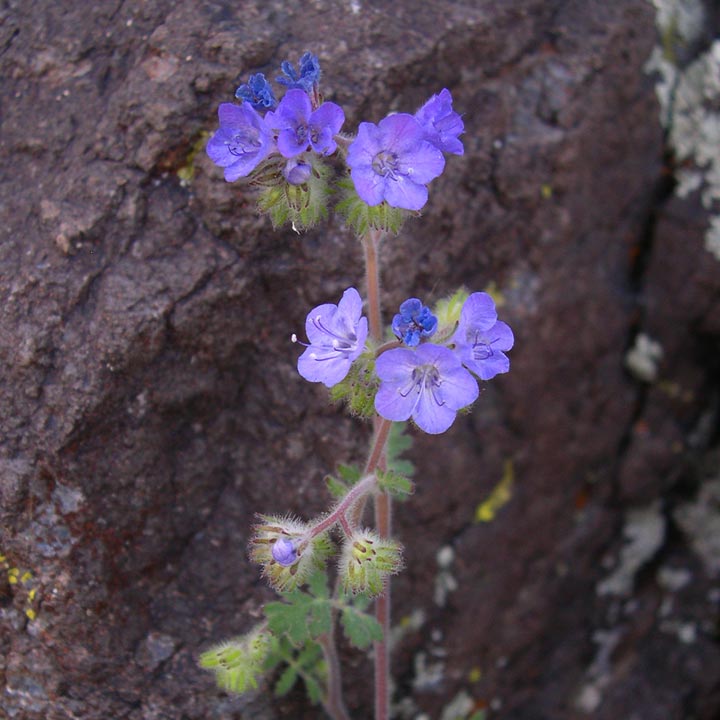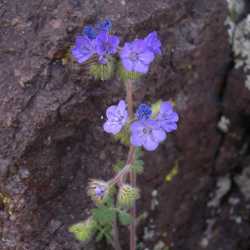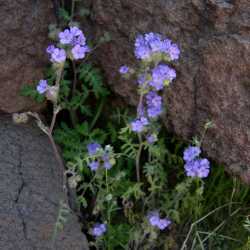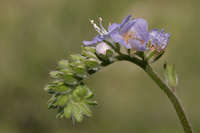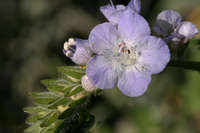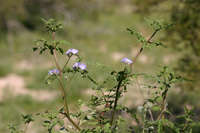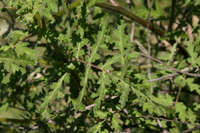Duration: Annual
Nativity: Native
Lifeform: Forb/Herb
General: Annual forb 15-45 cm, erect and simple to much branched and spreading to procumbent; herbage moderately sticky and scabrous with conspicuous white hairs, sometimes with swollen white bases and sessile glands, golden when fresh; stems leafy, semi-succulent and relatively stout.
Leaves: Usually relatively thin and fern-like, 6-17 cm, 1 or 2 times pinnatifid, segments pinnately lobed or toothed to pinnatifid.
Flowers: Cymes helicoids, calyx lobes enlarging moderately in fruit, reaching 6 mm; corollas 8-9.5 mm, pale violet to blue, the lobes spreading; stamens usually no or scarcely exserted.
Fruits: Seeds 4 or fewer around 2 mm, red-brown, narrowly ovoid, pitted, the back convex, the ventral side angled and convex.
Ecology: Found under bushes along washes and along sandy-gravelly washes and bajadas and less often rocky slopes from 1,000-4,000 ft (305-1219 m); flowers from February-May.
Distribution: NV, AZ, CA
Notes: Delicate foliage and bright-blue flowers are indicative of this species, plants often disappearing quickly along with soil moisture. Similar to P. cryptantha but look to the hirsute to villous calyx (not hispid or with the lobed contracted into claws); blue corollas (vs. lavender-purple in P. cryptantha); and corolla 6-9 mm long (4-7 mm long in P. cryptantha).
Ethnobotany: Leaves were steamed and eaten as greens by Kawaiisu.
Etymology: Phacelia from Greek phacelo- for bundle, distans means separated, apart, widely-spaced in reference to the long, exserted stamens.
Synonyms: Phacelia cinerea, Phacelia distans var. australis
Editor: SBuckley, 2010


